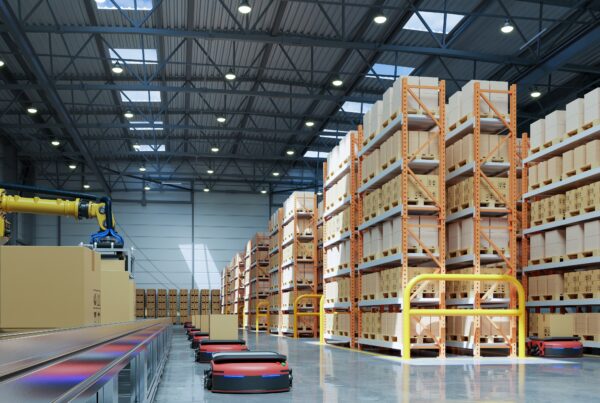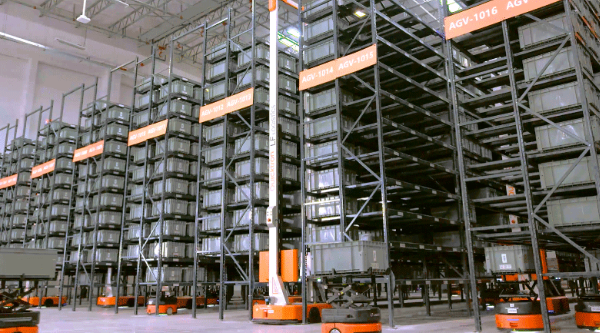COVID-19 has taken a toll on several industries, including warehouse and DC operations. While the warehousing/DC operations landscape has been changing for many years, the pace of this change has been accelerated by the pandemic. Being aware of the latest trends in warehouse management will help businesses stand their ground and adapt to the environment long after the pandemic.
What were the biggest challenges faced in 2020 in terms of warehousing/DC operations? What new conditions emerged due to Covid-19? What were the effects of COVID-19 in warehousing?
Challenges faced in warehousing and DC operations grew manifold with the pandemic. As consumers shifted to buying more online, there was a sudden boom in e-commerce responsibilities of businesses and channel disruption.
With consumers expecting speedy deliveries, companies found it increasingly harder to maintain inventory levels and fulfill the rising demand due to lack of space and number of facilities. The lack of SKU weight, as well as dim data, also posed challenges for warehousing and DC operations.
Safety issues also interfered with warehousing/DC operations, with businesses having to ensure safety protocols, including those involving the use of masks, social distancing, and sanitization of equipment. There was also an issue with the attraction and retention of talent, with small-sized units noticing a decline in staffing.
Despite these challenges, however, most businesses are on the path to implementing changes in their warehousing and DC operations in keeping with the changing times. Ways to maintain more inventory, increasing warehouse capacity by investing in facilities, and greater warehouse automation were just some of the effects of the pandemic on warehousing and DC operations.
In what way do responders plan to improve warehouse processes and inventory management?
Safety measures
These include the protocols to be followed for COVID-19 like wearing masks, sanitization of equipment, temperature screening, and even layout configuration.
Automation and investment in technology
Automation promotes better inventory control, greater accuracy, and lowers operational costs. Apart from this, companies have also taken other measures to lower costs.
Expansion plans
Companies were more willing to invest in facilities, buildings, and space to meet the growing demands and overcome space constraints.
How did e-commerce grow?
With more consumers ordering online, there was a massive growth in e-commerce that sped up the warehouse industry trends. This was reflected in higher SKU counts. Wholesale was the most commonly serviced channel, but there was a drop in retail channels. Omni-channel distribution also increased and micro-fulfillment of orders started taking place.
What COVID adjustments were made?
Social distancing
Warehousing and DC operations were adjusted to comply with safety protocols as a result of the pandemic, including the need to wear masks and practice social distancing. Areas such as break rooms with a higher likelihood of close proximity were subjected to greater social distancing practices. Regular temperature checks, wearing masks, and sanitization of equipment was also carried out.
Layout changes
Workstations were also rearranged to make social distancing easier and layout configurations were changed. Besides layout changes, more shifts were also added to ensure that there was a lesser number of workers within the warehouse at any given point in time. With automation enabling proper slotting, zoning, and dispatching of work, maintaining physical distancing between workers also became more convenient, and picking tasks was made easier.
People practices
Wages were also increased to attract and retain trained staff and carry out fulfillment tasks.
Many warehousing and DC operations also plan to continue to maintain all or at least, some safety practices after the pandemic. In the long run these practices will lead to a healthier and stronger workforce.
What new operational decisions were taken?
Channel servicing and fulfillment
Wholesale was the most commonly serviced channel, but there was a drop in retail channels. Omni-channel distribution also increased and micro-fulfillment of orders started taking place. There was also a drop in the 3PL partner for channels.
Expansion plans
The number of buildings and total square feet of the DC network also increased, with more companies investing in expansion plans of some type. More space was also leased with higher peak warehouse space utilization.
Change in inbound and outbound operations
There was also a change to the nature of inbound and outbound operations, with a drop in full pallet for inbound and a slightly higher split-case outbound.
Why was an increase in looking towards automation born for 2020?
COVID-19 created challenges of inventory, safety, space, and speedy order fulfillment as e-commerce saw a boom. The increasing demand necessitated investment in warehouse automation and capital expenditure for equipment and the use of technology.
To minimize costs while meeting demand
Warehouse management system (WMS) software, like SRSI’s SwiftCurrent solution, was adopted by nearly 85% of companies surveyed. Instead of paper-based picking methods, the use of RF-based handhelds increased by 20%. Light driven picking was also used by companies in their warehousing and DC operations.
There was also a drop in manual data collection and an increase in automated data collection methods. The use of automated equipment also resulted in more on-time shipments and better leveraging of metrics. Warehouse automation helps to lower operational costs while facilitating better inventory management. These warehouse solutions have also helped to solve problems associated with labor and spikes in demand.
What are the latest major trends in warehouse management?
The pressure to meet e-commerce responsibilities arising from pandemic challenges has resulted in warehouse trends like automation in warehousing and DC operations. Companies are realizing how essential it is to keep more inventory on hand and increase warehouse capacity by continuing to invest in facilities and automating warehouse operations. They are also embracing other warehouse industry trends like omni-distribution channels and engaging in micro-distribution from stores.
What should you do to adapt to the current environment?
Companies need to invest in more technology and adapt to the changing environment by embracing the trends in warehouse management. SRSI will help every step of the way and ensures unique system combinations that meet your operation’s needs.
Why is it important to be aware of all changes in the field?
Being aware of the link between the latest warehouse trends and COVID-19 will allow companies to grow in the current market and gain a competitive edge. SRSI provides all the systems and software solutions mentioned in this article, from micro-fulfillment to full and split-case picking. Ready to make the next step towards your warehouse or DC optimization? Contact us today.
 Skip to main content
Skip to main content






